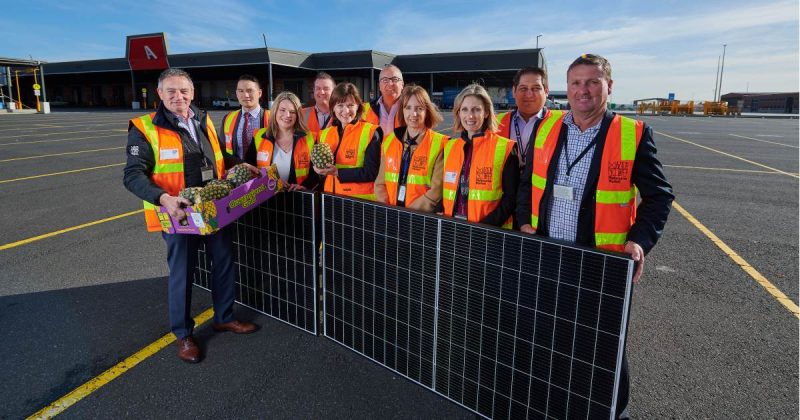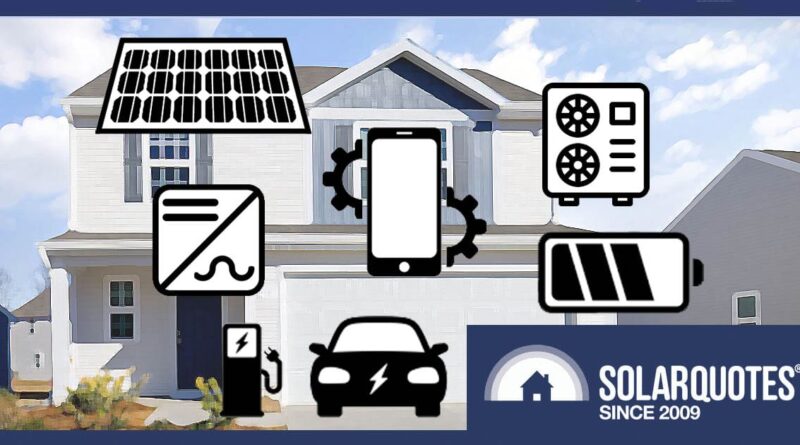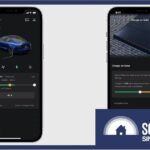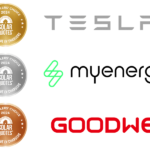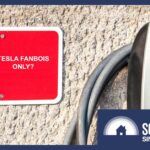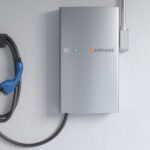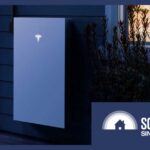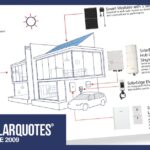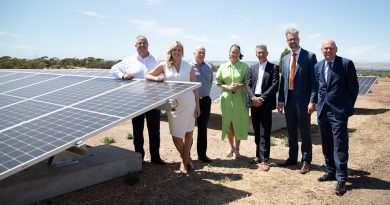Cybertruck’s Powershare: Single-Vendor Ecosystems For The Win?
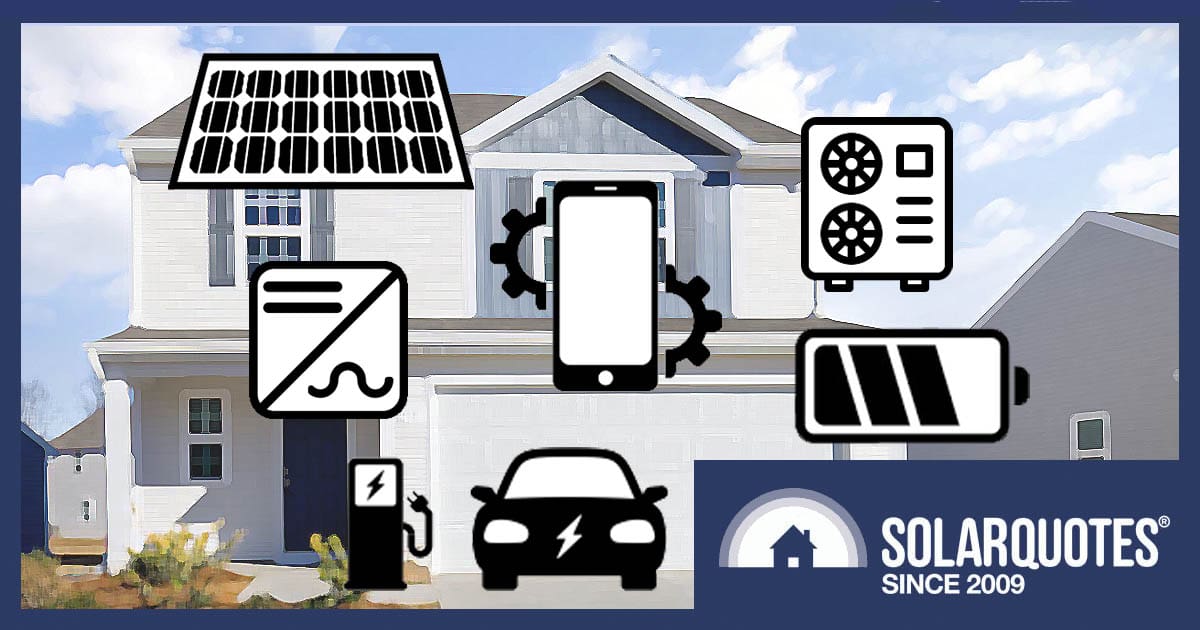
Let’s face it: The number of different solar-related products out there is mind-boggling to the average consumer. There’s a myriad of solar panels, inverters, batteries, EV chargers, and assorted smart energy devices.
As the world scrambles to electrify everything, the list grows longer, and the lack of standardization that afflicts every industry means you can be left with a solar inverter, home battery, EV charger and other appliances that can’t talk to each other.
Early adopter Tom, for example, bought a SolarEdge inverter, Sonnen battery, and myEnergi EV charger and struggled to get them to talk:
Wouldn’t it be easier to buy the whole suite from a single manufacturer and know that when you press the go button, everything will work?
The good news is that more and more solar companies are offering just that – a whole range or ecosystem of interconnected solar products designed to work together seamlessly.
Tesla Powershare
Last week’s launch of Tesla’s Cybertruck with its innovative ‘Powershare‘ Vehicle-to-Home (V2H) technology marks a significant leap forward. This system, leveraging Tesla’s product ecosystem, enables bi-directional charging using existing Tesla hardware.
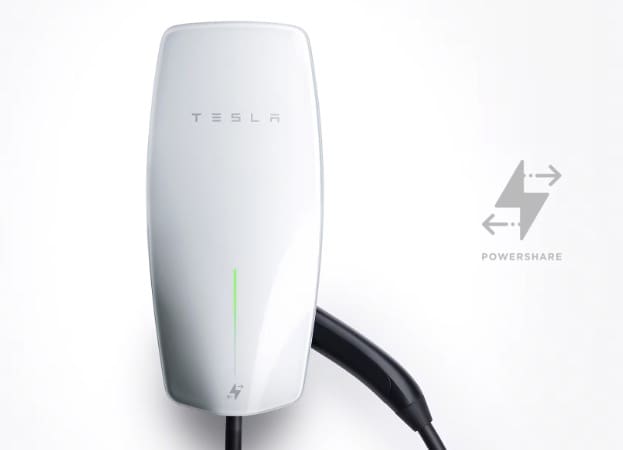
Our American cousins do not need to buy a $10,000+ bi-directional charger to achieve bi-directional charging like Joseph had to:
American Tesla fans who want to power their home with their vehicle can reuse their existing Tesla Universal Wall Connector EV charger1, Powerwall, and Tesla Gateway box. Oh – and until Tesla adds Powershare to their other cars, they’ll also need a Cybertruck.
Enabling bi-directional charging at almost no extra cost (assuming you’ve already invested in the product ecosystem) has thrown down the gauntlet to the likes of Fronius, Enphase, SMA and SolarEdge. They’ll need to catch up quickly to compete.
Communication Is Key
As we move to mostly variable generation on our roofs and the grid, we need to coordinate all hardware and devices effectively so we can:
- Exchange real-time data to maximise solar self-consumption.
- Communicate between energy sources and EVSE to optimize charging times.
- Intelligently manage grid imports and exports to support the grid, minimise costs and maximise earnings.
- View all energy flows and controls on a single app.
The problem that exists right now concerning devices from differing manufacturers is twofold. Due to the lack of standardisation in communication protocols, not all hardware and software will talk to each other. Secondly, even if they share the same comms protocol, in the event of a malfunction, it’s common for one vendor to blame the other, resulting in a stand-off and the customer getting caught in the crossfire.
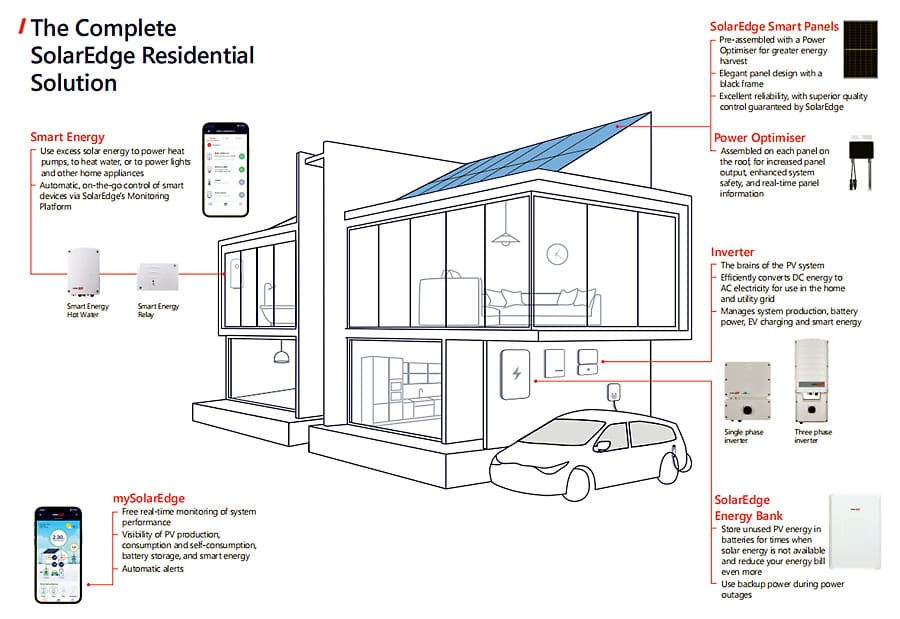
SolarEdge offers a wider array of solar product categories than most vendors. How quickly can they add their version of Powershare? Image: SolarEdge
Pros And Cons Of Solar Product Ecosystems
Choosing a brand that offers a fleet of interrelated products sure makes sense in many ways, but it’s not all clear skies and plain sailing. Along with the above advantages, there’s a flip side. Let’s take a look.
Product Ecosystem Pros





Product Ecosystem Cons




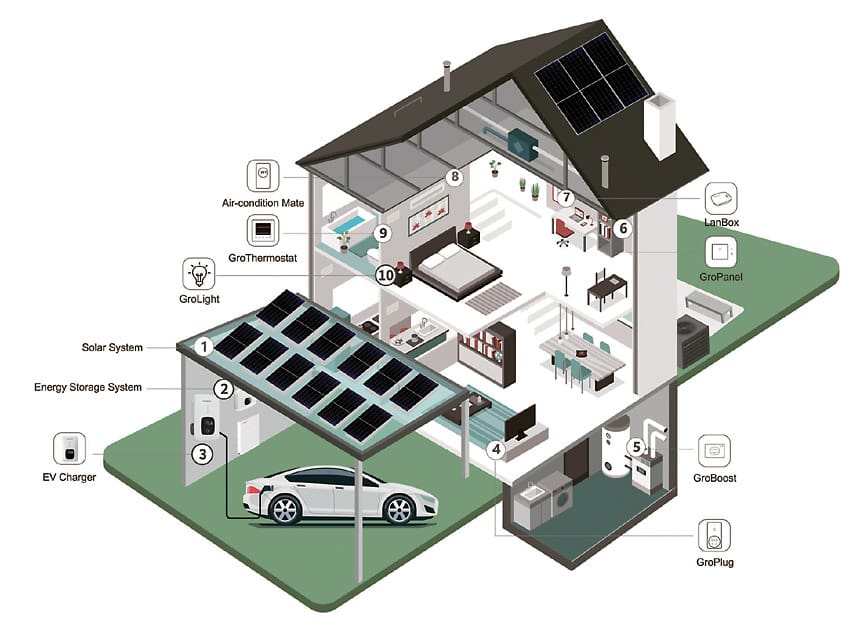
Growatt’s product line and energy management system – Grohome. They’re covering many bases, but are they spreading themselves too thin to do it well? Image: Growatt
Monitoring And Load Management
Virtually all solar products now have monitoring using a phone app or web portal. Solar production monitoring is a bare minimum, and if you don’t have household consumption monitoring, you’re crazy.
Vendors going down the product ecosystem route are now offering more sophisticated tools, such as HEMS (Home Energy Management Systems), to monitor and control their suite of products from a single interface. These come in varying degrees of functionality, from simply monitoring device inputs, to actively and intelligently controlling household electrical loads.
Load management is achieved in a number of different ways. Some systems communicate between hardware using a hard-wired RS485 connection, or wireless via Wi-Fi, Zigbee, RF, or other communication protocols. Appliances can be activated automatically when there is surplus solar power or pre-determined battery state of charge.
Others are fitted with a dedicated load control circuit within the inverter or additional hardware. When a load control event occurs, a set of relay contacts is closed, which can trigger an external contactor to energise a household load, such as a water heater or pump, etc.
If you’re contemplating a single-vendor solar product ecosystem, energy management, including load control of your collective hardware and household appliances, should be sitting high on your list of priorities.
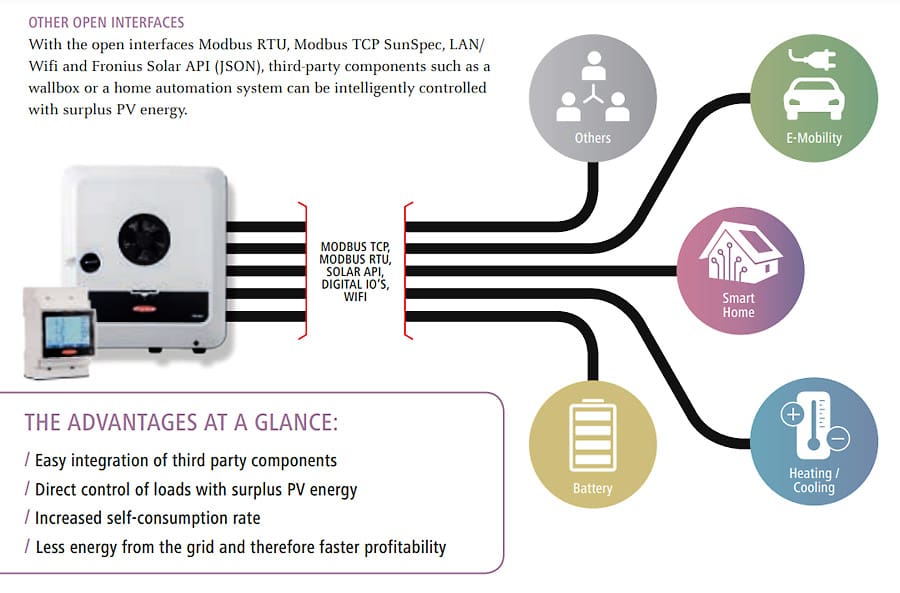
With the inverter-integrated energy management from Fronius, energy-intensive loads in the household can be directly controlled with surplus PV energy. Image: Fronius
How To Choose A Solar Ecosystem Brand
Investigate reputable solar brands that offer integrated ecosystems. Include collaborative partnerships. Look for manufacturers known for reliability, performance, and positive customer reviews. Hopefully, the points raised above, and the following table can be of some help.
Ecosystem Brand Comparison Table
Listed in the following table are solar manufacturers that produce two or more of these product categories – solar panels, inverters, batteries, EVSE, solar diverters, and hot water heat pumps. We could loosely define that as a product ecosystem. They may also manufacture additional hardware devices that don’t fit neatly into the categories above.
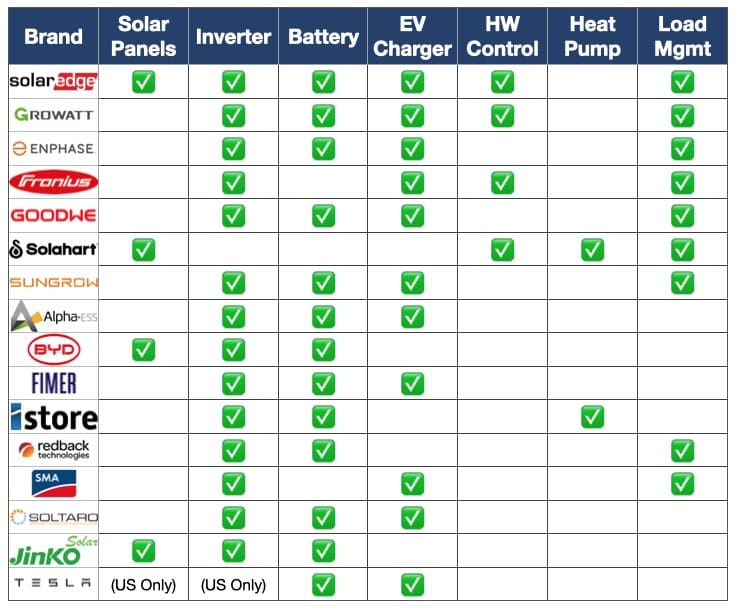
Footnotes
Original Source: https://www.solarquotes.com.au/blog/solar-product-ecosystem/

